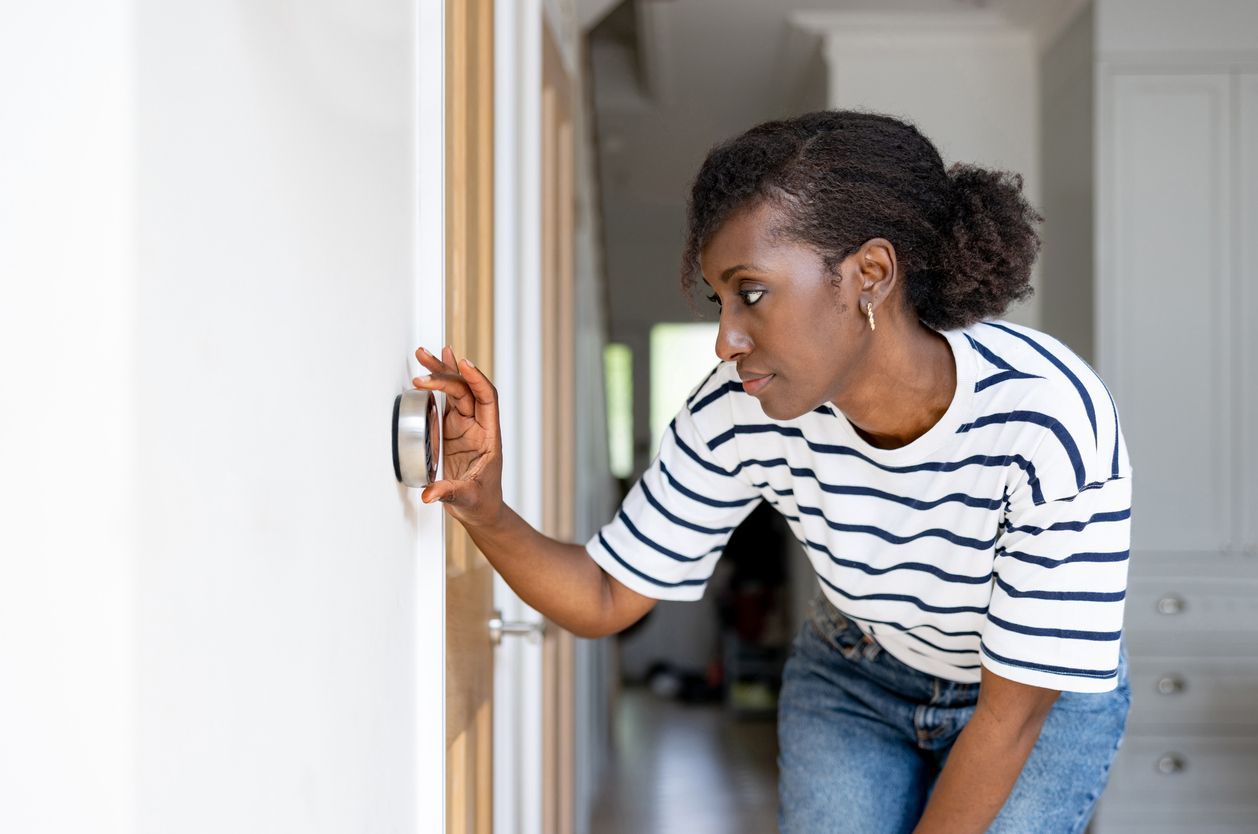How to Fix a Hole in the Wall

Whether you’re getting ready to sell, moving into a fixer upper, or repairing everyday wear-and-tear, it’s important to know how to do simple repairs around the house. If you strive to be a DIY homeowner or renter, you’ll save money and time, impress your friends, and enjoy the sense of accomplishment that “doing-it-yourself” can bring.
DIY Drywall Repair
Learn to repair holes in the wall and you’ve both beautified your space and gained pride in self-sufficiency.
Note: If using tools make you uneasy, engage the help of a professional – or ask for help from a friend who patched drywall before.
Supplies You’ll Need to Fix Holes in Drywall
- Face Mask (to block dust inhalation)
- 100-grit Sandpaper & 220-grit Sandpaper
- Drywall
- Screw Gun & Drywall Screws
- Drywall Tape, Joint Compound (aka Spackle) & Taping Knife
- 1”x3” Pine Board
- Level or Straight Edge Ruler
- Utility Knife
- Paint & Paintbrush
Not sure exactly what you to buy? Your local home improvement store has someone on hand who will ask questions and get you started.
Steps to Repair Drywall
1. Check for wires, cables, pipes, ducts, or studs, then cut the damaged drywall out.
Be careful to work around wires and other obstructions. Mark the wall with a Level to create clear cutting guidelines in a square shape around the area. Use the drywall saw to cut out the square. Use the utility knife to make shallow cuts if you’re working on top of a stud or around wires. Remove damaged drywall scraps.
2. Determine if you need Backer Boards, aka Furring Strips.
Backer boards are used to keep the new drywall patch in place and are about four inches wider or longer than the opening. If the area is larger than 6”, add Backer Boards for stability. Hold the Backer Boards tightly to the back of the existing drywall so they’re visibly going through the opening. Use the screw gun and drywall screws to secure them. Sink the screws slightly past the drywall surface.
3. Cut and Attach the Drywall Patch.
If not using Backer Boards, cut the drywall patch to size, 2” wider and longer than the opening using the drywall saw. Score the back of the patch with the utility knife, 1” from each edge, then snap the gypsum off so a paper border remains. Place the patch to cover the opening with drywall screws.
If you’re using Backer Boards, cut the patch to fit the hole within 1/8” around and screw the patch directly to the Backer Boards.
Step 4: Spackle and Tape.
Use the paint knife, spread a 1/8”-thick layer of joint compound, aka spackle, to fill and seal the edges. Press drywall tape over the wet joint compound. Add more compound immediately on top. Spackle any visible screw heads. Swipe across the area to pick up excess compound, add compound, swipe down to pick up excess, and continue this way until it appears smooth and tapers to the existing wall.
Step 5: Apply One to Two More Coats of Joint Compound.
Allow each layer of joint compound to dry before adding the next. Apply compound at least 6” beyond the patch and taper the edges work, using the taping knife to swipe, scrape, and smooth the surface. Any extra compound will be sanded off later for a polished finish, but it’s easier to smooth compound when wet than to sand compound when dry, especially if sanding by hand.
If you’re working close to a corner or concerned about spreading the compound too far, use masking tape to protect other areas.
Step 6: Sand the Dry Compound
Depending on humidity, you may need to wait up to a day for the joint compound to dry to the touch. When dry, using the 100-grit sandpaper (coarse), then the 220-grit sandpaper (fine), sand the extra compound for a smooth finish that blends with the existing wall.
Use a Drywall Sander to make sanding go faster. You can typically buy or rent these from your local hardware store.
Step 7: Prime and Paint.
You may be able to simply paint the patch and immediate surrounding area, but it’s wise to prime and paint the entire wall for uniformity. Doing so helps blend the patch further, accounts for existing color fade, and makes for a clean finish.
Quick Tips
- You can patch your own walls and repair holes in drywall.
- Be mindful when cutting the wall to avoid anything important or dangerous.
- Wear the proper safety equipment at all times.
- Less is more when spackling.
- Vacuum up dust and wipe down area with a damp rag before you paint.
- Always keep samples of paint for small area repairs.
- Keep tools together and keep remaining drywall scraps for future fixes.
Related Post: Four Simple Paint Projects to Transform Your Space










